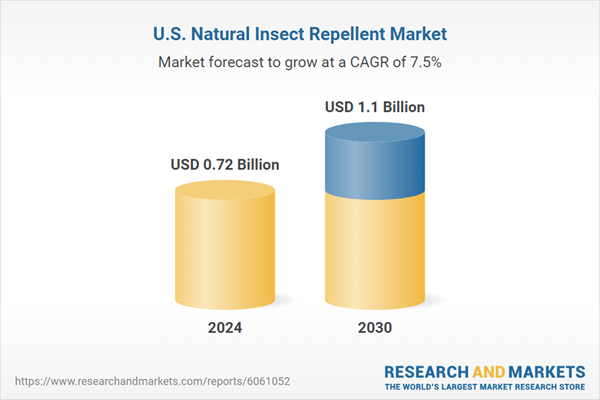Speak directly to the analyst to clarify any post sales queries you may have.
10% Free customizationThis report comes with 10% free customization, enabling you to add data that meets your specific business needs.
Key Market Drivers
Rising Health Concerns and Demand for Chemical-Free Products
Consumers are becoming more conscious of the potential health risks associated with synthetic insect repellents, particularly those containing DEET (N,N-Diethyl-meta-toluamide). Prolonged exposure to DEET has been linked to skin irritation, neurological issues, and other health concerns, prompting a shift toward natural alternatives. As a result, plant-based insect repellents formulated with essential oils such as citronella, eucalyptus, peppermint, and lemongrass are gaining traction. As of September 2024, dengue cases have exceeded 11.5 million, reflecting a 228% surge compared to the same period in 2023. The World Health Organization (WHO) reports that nearly half of the global population is at risk of dengue.Furthermore, increasing awareness of allergies and sensitivities to synthetic chemicals has encouraged consumers, especially parents, to opt for natural insect repellents for children. Many natural repellent brands market their products as safer for sensitive skin and environmentally friendly, making them an attractive choice for health-conscious consumers.
Key Market Challenges
Perceived and Actual Effectiveness Compared to Synthetic Repellents
One of the biggest challenges for natural insect repellents is their perceived and actual effectiveness compared to synthetic alternatives like DEET and picaridin-based products. While natural ingredients such as citronella, oil of lemon eucalyptus, and peppermint oil are widely used, they often do not provide the same long-lasting protection as chemical-based repellents. DEET-based products can offer up to 12 hours of protection, whereas most natural alternatives require frequent reapplication, sometimes every one to two hours.This reduced longevity can be a major drawback for consumers who need all-day protection, especially in high-risk areas for vector-borne diseases such as Lyme disease and West Nile virus. Additionally, there is skepticism about the efficacy of natural repellents, with some consumers doubting whether plant-based formulations can effectively repel mosquitoes, ticks, and other pests.
Key Market Trends
Growing Popularity of Plant-Based and Essential Oil Formulations
Consumers are increasingly looking for natural and non-toxic alternatives to conventional insect repellents. As a result, plant-based formulations featuring essential oils such as citronella, oil of lemon eucalyptus, peppermint, geranium, and lavender are gaining traction. These ingredients are not only effective in repelling mosquitoes and ticks but also appeal to health-conscious individuals who prefer chemical-free solutions.The shift toward natural formulations is particularly strong among parents, pet owners, and individuals with sensitive skin, who are wary of synthetic chemicals like DEET and picaridin. Additionally, some plant-based repellents are marketed as multipurpose products with added benefits, such as moisturizing properties and pleasant scents, making them more attractive to consumers.
Key Market Players
- Wondercide LLC
- The Coleman Company, Inc.
- W.S. Badger Company
- The Procter & Gamble Company
- Quantum Health, Inc.
- EARTHLEY
- 3 Moms Organics LLC
- Spectrum Brands Holdings, Inc. (Repel)
- S. C. Johnson & Son, Inc.
- Murphy’s Naturals, Inc.
Report Scope:
In this report, the United States Natural Insect Repellent Market has been segmented into the following categories, in addition to the industry trends which have also been detailed below:United States Natural Insect Repellent Market, By Product Type:
- Spray
- Creams
- Essential Oils
- Liquid Vaporizers & Diffusers
- Others
United States Natural Insect Repellent Market, By Distribution Channel:
- Online
- Offline
United States Natural Insect Repellent Market, By Region:
- South
- West
- Midwest
- Northeast
Competitive Landscape
Company Profiles: Detailed analysis of the major companies present in the United States Natural Insect Repellent Market.Available Customizations:
With the given market data, the publisher offers customizations according to a company's specific needs. The following customization options are available for the report.Company Information
- Detailed analysis and profiling of additional market players (up to five).
This product will be delivered within 1-3 business days.
Table of Contents
Companies Mentioned
- Wondercide LLC
- The Coleman Company, Inc.
- W.S. Badger Company
- The Procter & Gamble Company
- Quantum Health, Inc.
- EARTHLEY
- 3 Moms Organics LLC
- Spectrum Brands Holdings, Inc. (Repel)
- S. C. Johnson & Son, Inc.
- Murphy’s Naturals, Inc.
Table Information
| Report Attribute | Details |
|---|---|
| No. of Pages | 81 |
| Published | March 2025 |
| Forecast Period | 2024 - 2030 |
| Estimated Market Value ( USD | $ 0.72 Billion |
| Forecasted Market Value ( USD | $ 1.1 Billion |
| Compound Annual Growth Rate | 7.5% |
| Regions Covered | United States |
| No. of Companies Mentioned | 10 |









